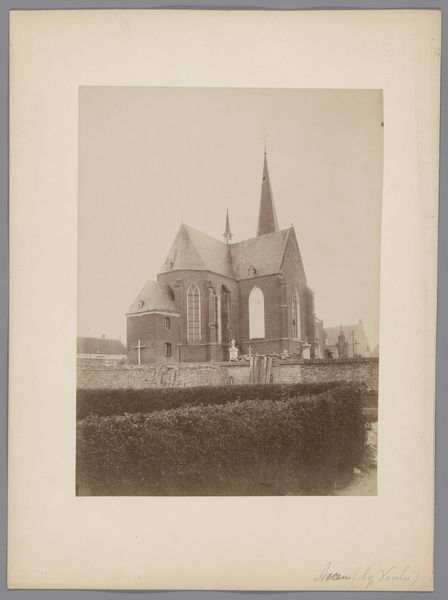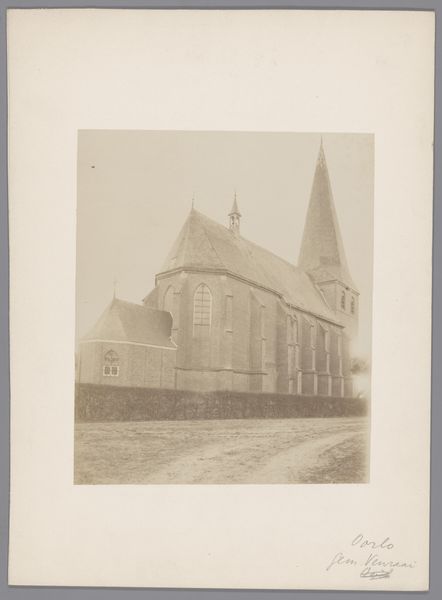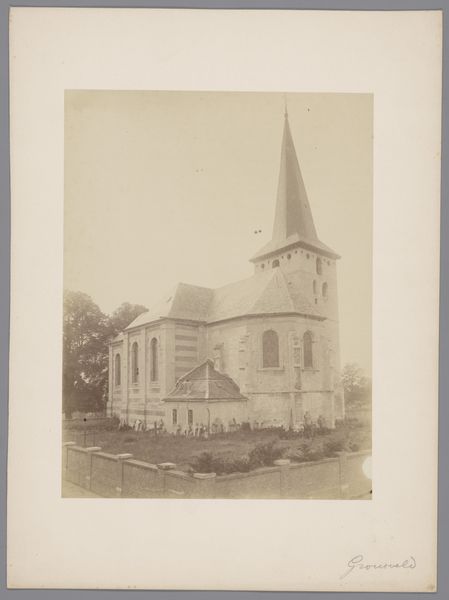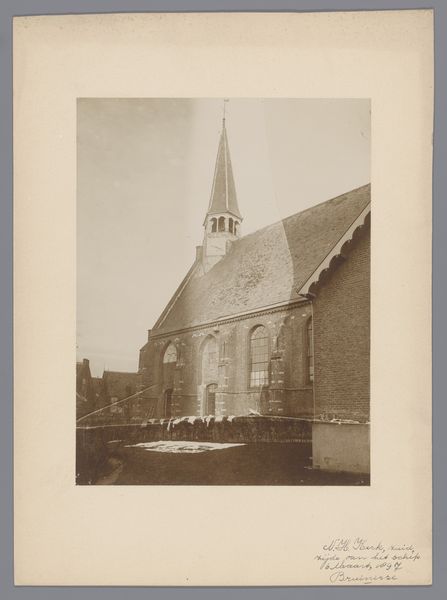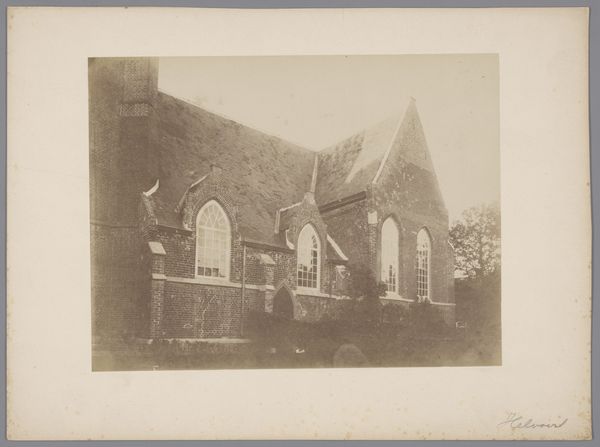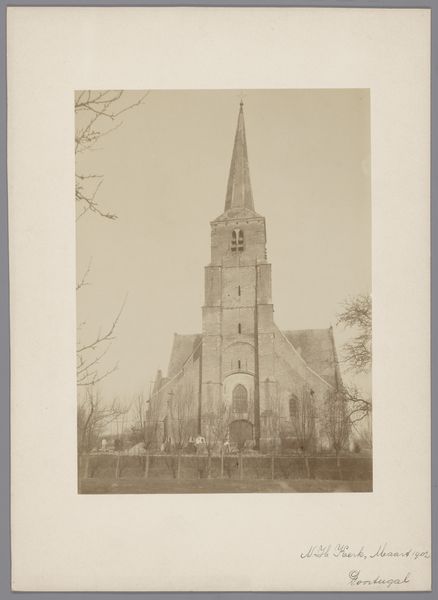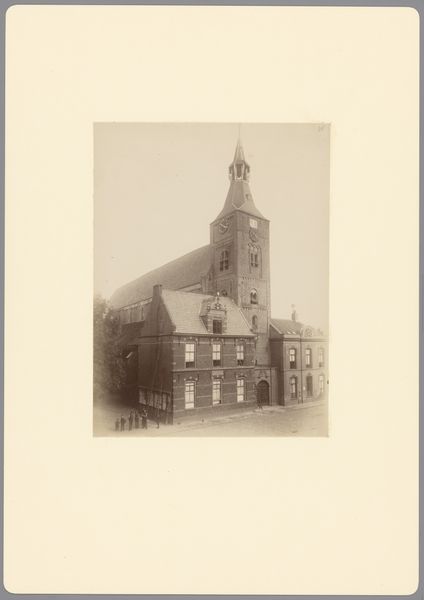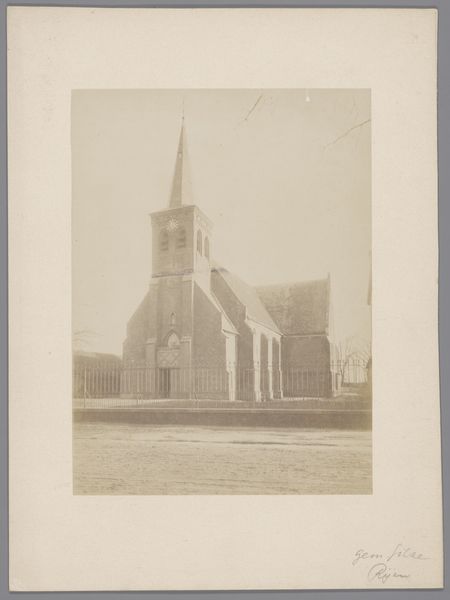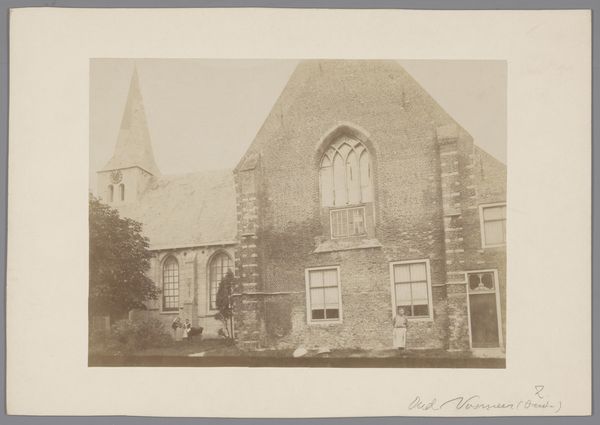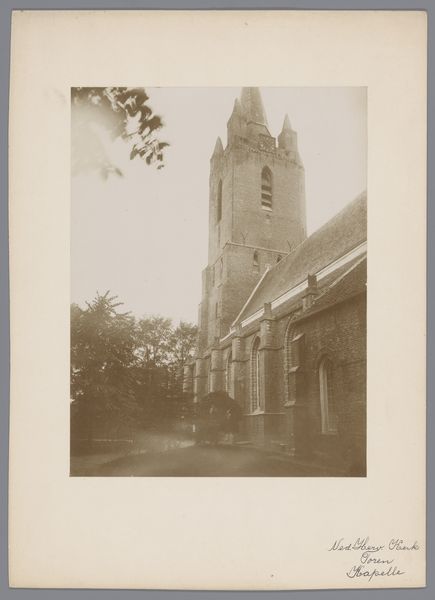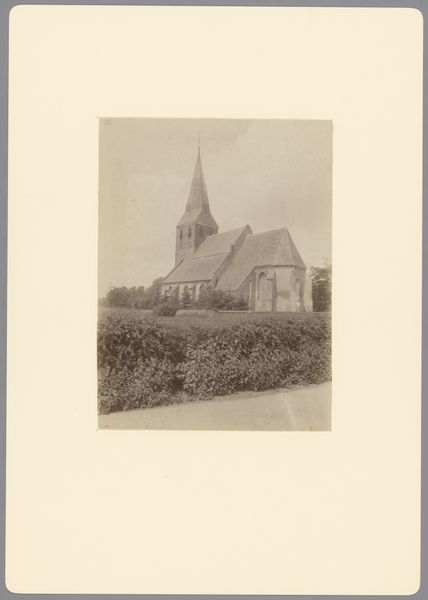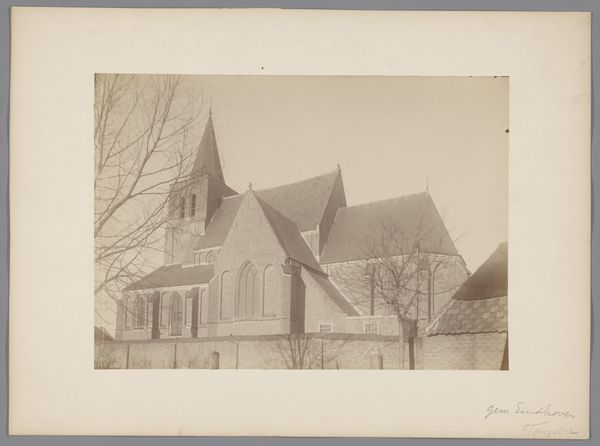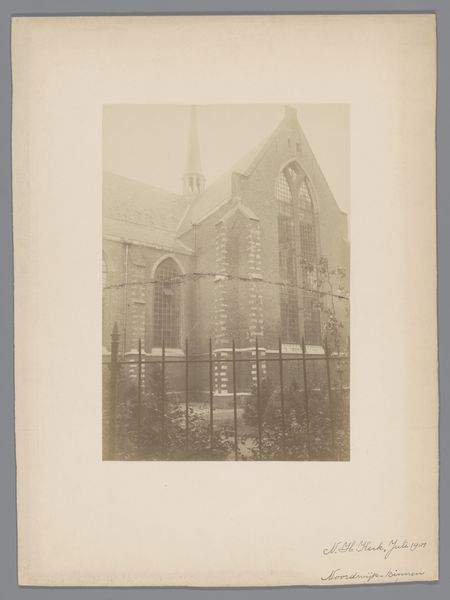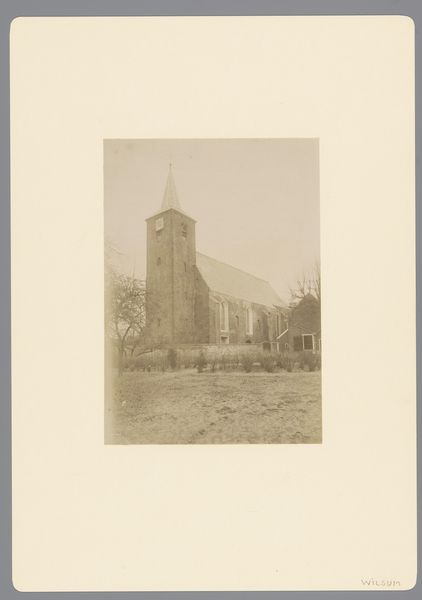
Dimensions: height 226 mm, width 176 mm
Copyright: Rijks Museum: Open Domain
This photograph of the Rooms-Katholieke Kerk in Arcen was captured by an anonymous photographer, using the wet collodion process. This was an early photographic technique that required the photographic material to be prepared, exposed, and developed within a short time, usually a darkroom. The process involved coating a glass plate with a chemical solution, sensitizing it in a silver nitrate bath, exposing it in a camera, and then developing it immediately. The resulting image, like this one, has a distinctive tonal range and a slightly soft focus. What's striking is the way this photographic process captures the church's architectural presence. The brickwork, the sharp angles of the spire, and the heavy texture of the surrounding landscape are all rendered with a specific material quality. The image is a testament to the labor and skill involved in both the construction of the church itself and the photographic process used to document it. It reminds us that both architecture and photography are material practices, deeply embedded in social and cultural contexts.
Comments
No comments
Be the first to comment and join the conversation on the ultimate creative platform.
